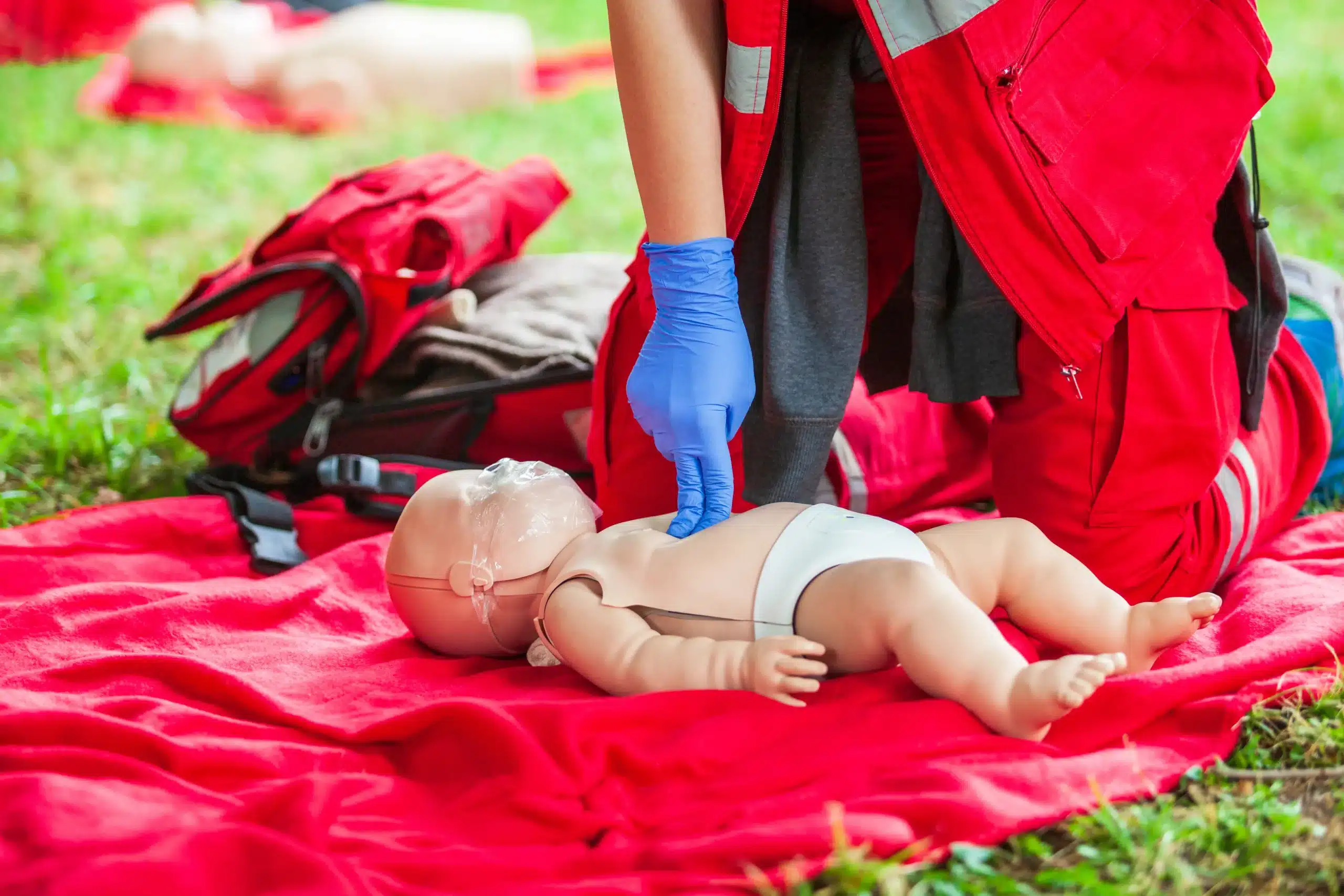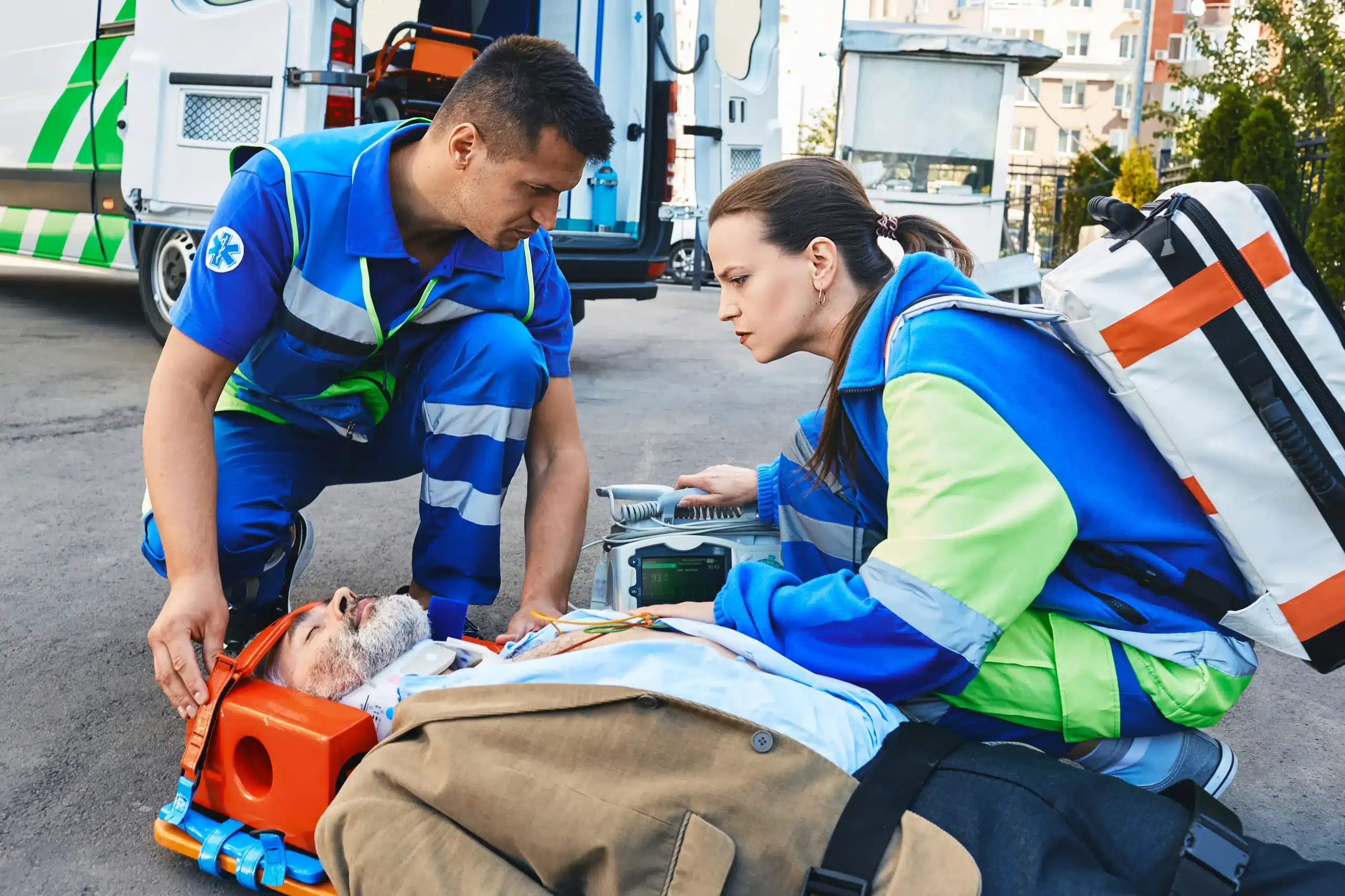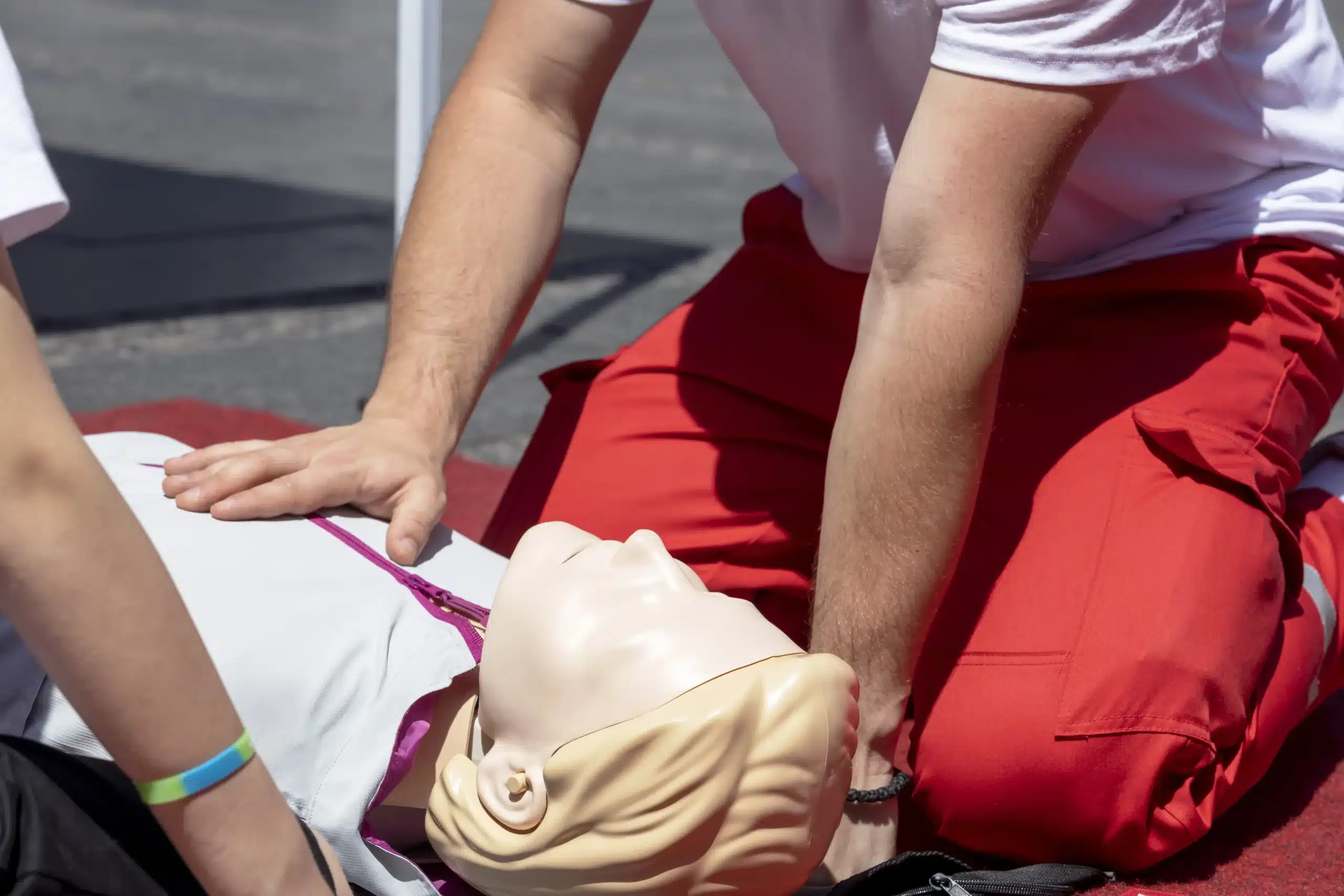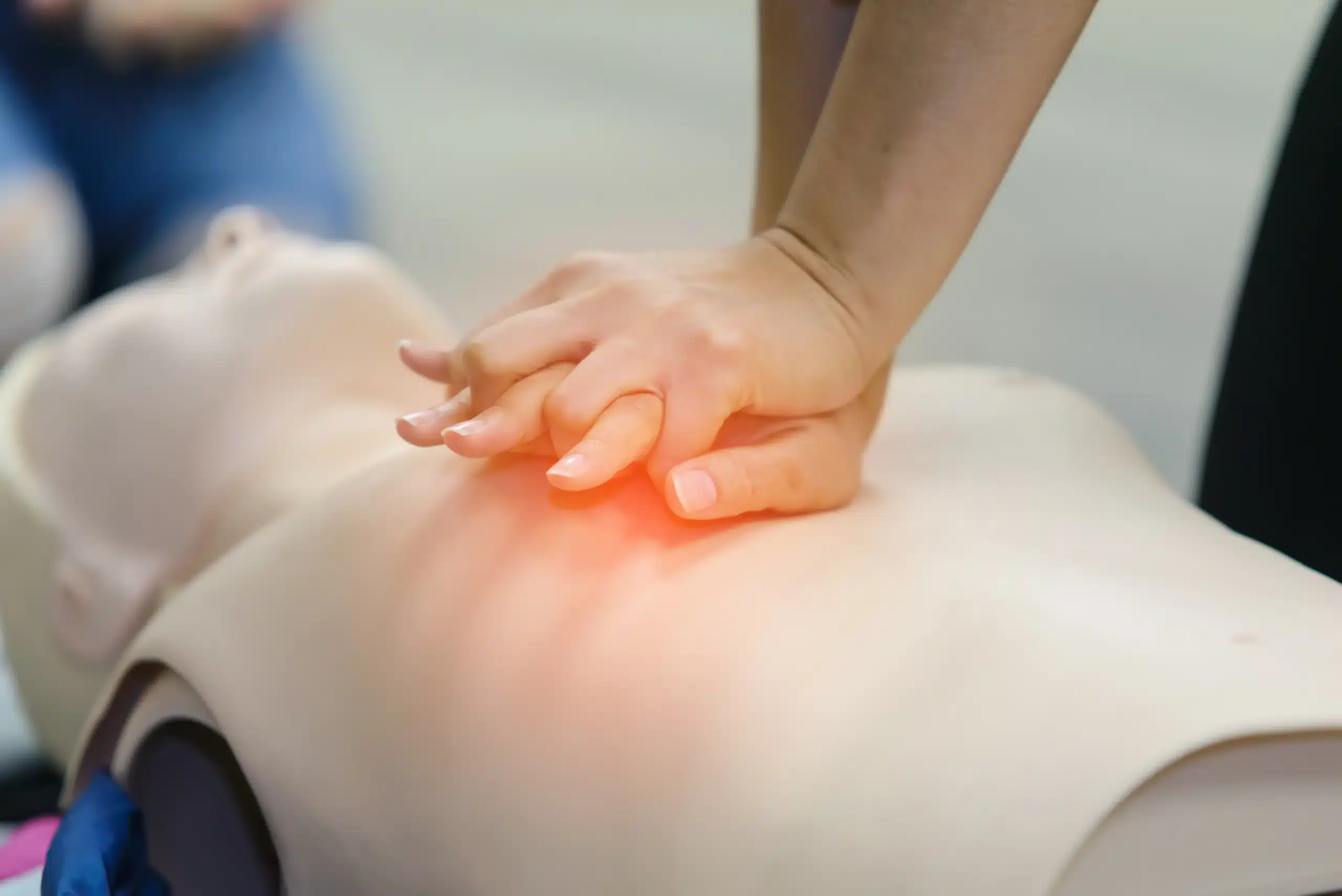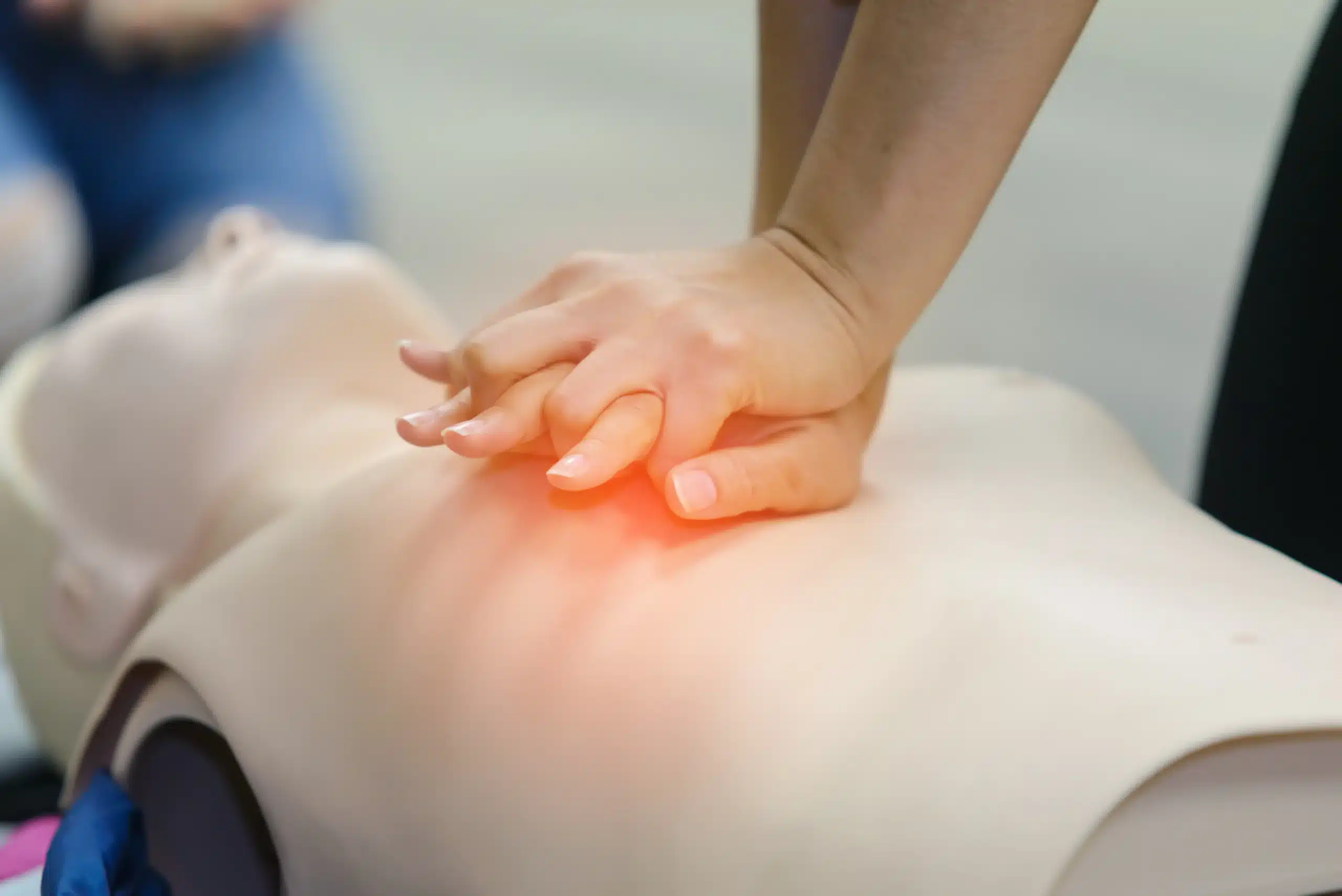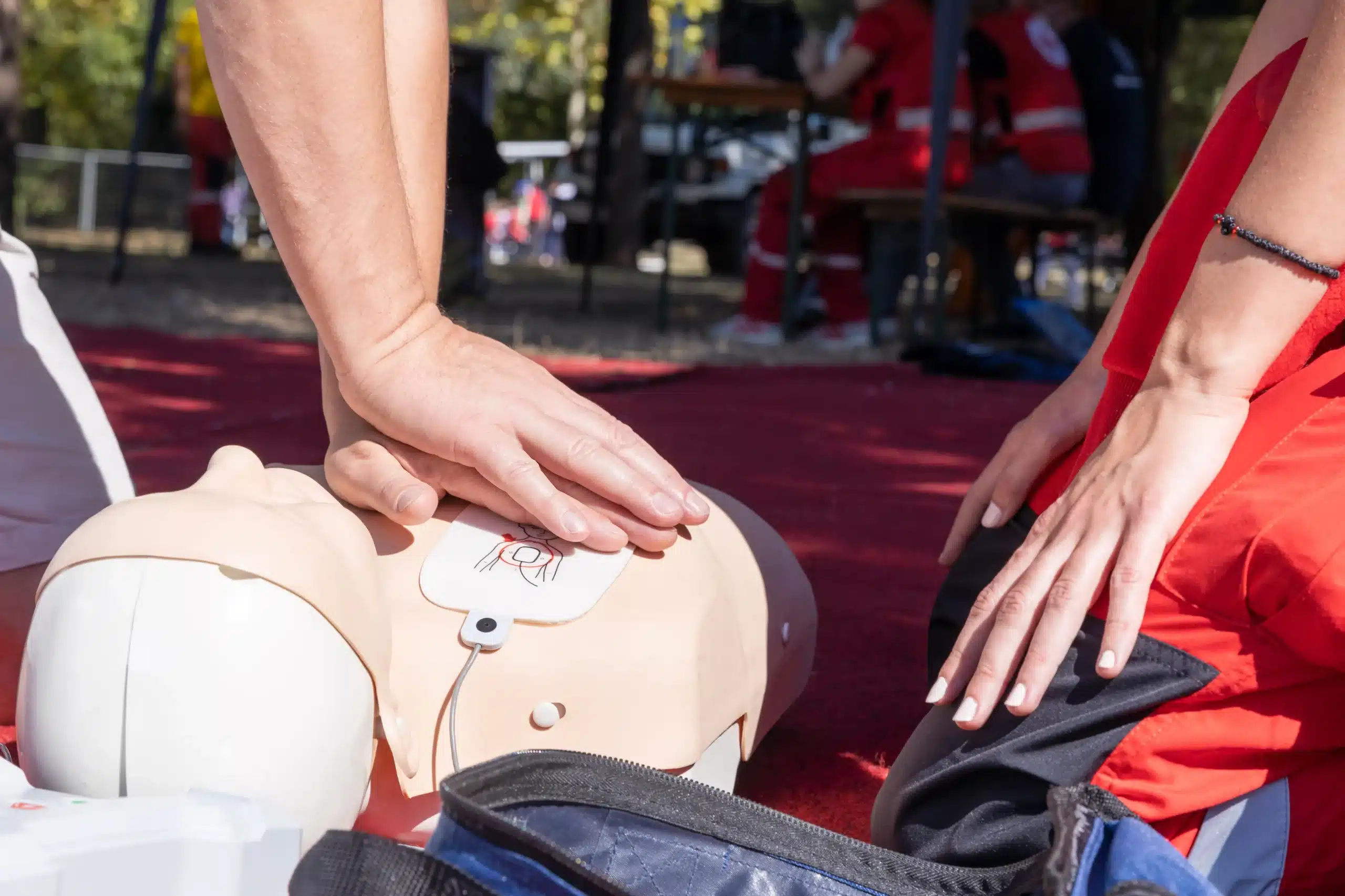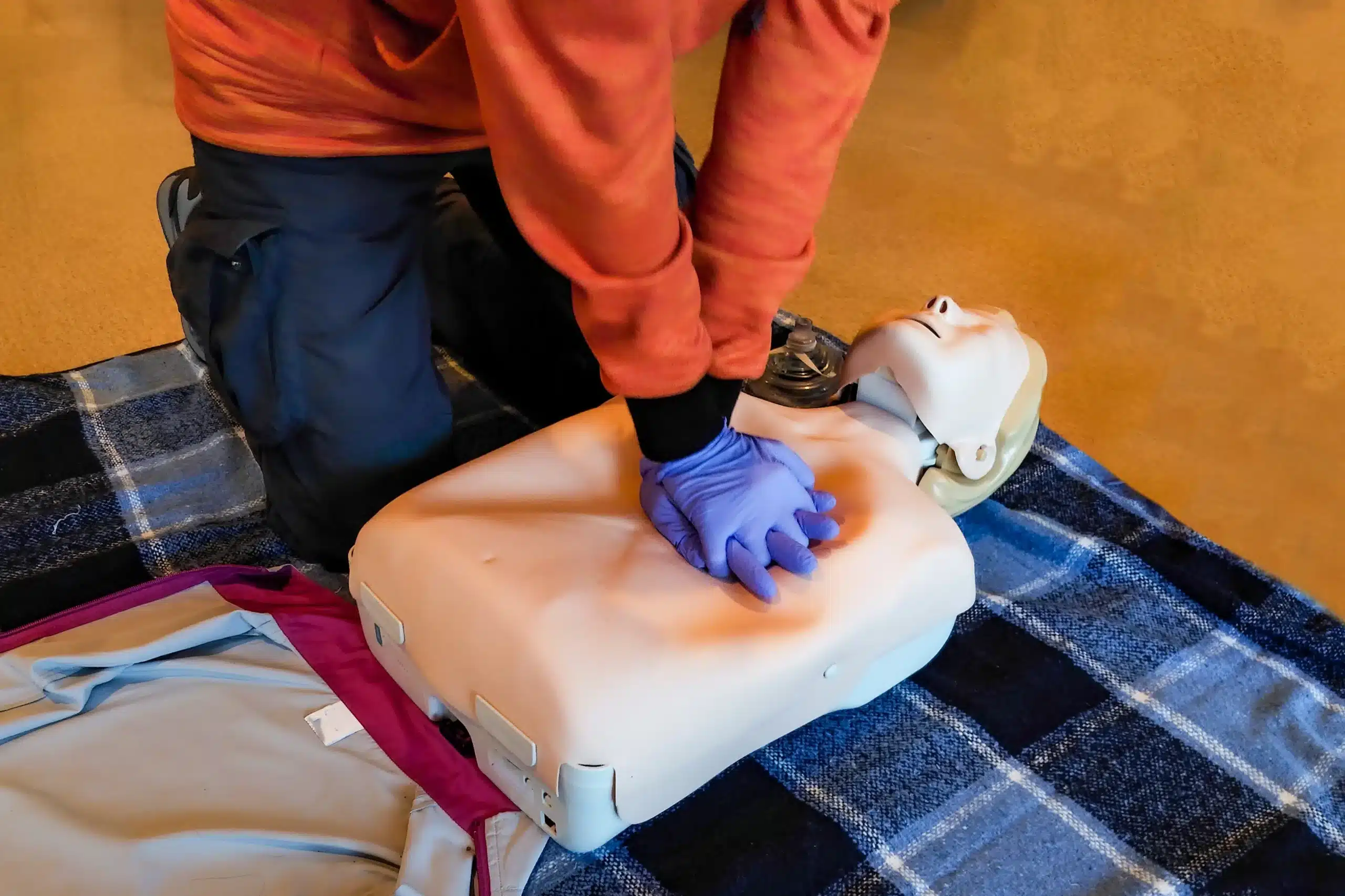Empowering yourself with life-saving skills like CPR is invaluable, but the cost shouldn’t be a hurdle. If you’re searching for CPR certification free options, this post is your comprehensive guide. We’ll explore the world of free online CPR courses, discuss their advantages and disadvantages, and uncover any potential hidden costs. We’ll also compare free courses with paid alternatives, helping you make an informed decision. Whether you’re a student, a healthcare worker, or simply a concerned citizen, this guide will provide you with the knowledge you need to find the right CPR training for you. We’ll also cover the importance of maintaining your certification and how to choose the best path based on your individual needs and circumstances.
Key Takeaways
- Free online CPR courses can introduce you to essential lifesaving techniques, but they often come with hidden costs like certification card fees and may lack the crucial hands-on skills assessment. Always check if a separate in-person skills session is required to obtain a valid certification recognized by your employer.
- Paid CPR courses generally offer a more complete package, combining online learning with in-person skills practice and often including certification upon completion. This comprehensive approach can be more efficient and ensure you meet workplace standards.
- When choosing any CPR course, free or paid, research the provider’s credibility and confirm the certification aligns with your state’s regulations and employer’s requirements. Staying current with the latest guidelines through continuing education ensures your skills remain sharp and effective.
What is Free CPR Certification?
Free CPR certification refers to training programs that give you the skills to perform CPR without charge. Many organizations offer these courses online, so you can learn at your own pace. These free online courses often cover similar material as paid, in-person CPR training—teaching you how to handle emergencies. While the training itself is free, you’ll likely need to pay for a certification card, which is often a requirement for jobs and other organizations. Free online CPR courses often use videos, quizzes, and other interactive elements to make learning more engaging. You can usually retake tests as needed, making sure you understand the material before moving on. It’s important to remember that free courses may have limitations. They might not meet all requirements for certain jobs, and they typically don’t include the hands-on skills assessment required for official certification from organizations like the American Heart Association. For some, a paid CPR certification course that includes everything—training, testing, and a certification card—might be a more efficient route.
Find Free CPR Courses Online
Finding a free CPR course can feel like hitting the jackpot, but it’s important to understand what “free” actually entails. Often, the course content itself might be free, but there are frequently costs associated with certification or other essential components. Let’s take a look at some popular options for free online CPR training.
American Heart Association (AHA)
The American Heart Association (AHA) is a leading authority on CPR training and offers a wealth of resources. While the AHA doesn’t typically offer free online certification courses, they emphasize the importance of high-quality CPR education. It’s crucial to be wary of sites offering “free AHA certification” online, as these may not be legitimate or meet workplace requirements. Always double-check with your employer or state licensing board to ensure any online certification will be accepted. For official AHA courses, including BLS, ACLS, and PALS, check out our course offerings.
Red Cross
The Red Cross offers a blended learning approach to CPR training, combining online learning with in-person skills sessions. This allows you to learn the basics online at your own pace and then demonstrate your skills with a certified instructor. While the online portion may be free or low-cost, the in-person skills session usually involves a fee. This blended format is a great way to get comprehensive training and is similar to the format we use at Palo Alto CPR Classes, ensuring you get both theoretical knowledge and practical experience. We offer a low price guarantee on all our courses.
National CPR Foundation
The National CPR Foundation sometimes offers limited-time promotions or free courses through partner organizations. Keep an eye on their website for these opportunities, as they can be a good way to save on certification costs. However, remember that these free offers may not always be available. For consistent and reliable CPR training, consider our regularly scheduled classes.
ProCPR
ProCPR offers a free online CPR course designed to be accessible to everyone, including people with physical limitations. This course focuses on practical, life-saving techniques. While the course is free, obtaining a certification card after completing the training typically involves a fee. At Palo Alto CPR Classes, our certification fees are transparent and included upfront in our course pricing.
National Health Care Provider Solutions (NHCPS)
NHCPS provides a free online Basic Life Support (BLS) course. This comprehensive course covers essential life-saving skills and is a valuable resource for healthcare providers and anyone interested in learning BLS. Similar to other options, while the course content is free, there’s usually a fee associated with obtaining certification. We offer American Heart Association BLS certification through the RQI program at Palo Alto CPR Classes.
Explore Free CPR Course Types
Free online CPR courses offer a convenient way to learn essential lifesaving skills. While these courses may not always provide formal certification accepted by all employers, they can still equip you with valuable knowledge and techniques. Many free courses cover a range of critical topics, giving you a solid foundation in CPR principles.
Adult, Child, and Infant CPR Techniques
Many free online CPR courses cover essential techniques for performing CPR on adults, children, and infants. Understanding the differences in approach for each age group is crucial for an effective emergency response. For example, the depth of compressions and rescue breaths varies depending on the age of the person receiving CPR. Free courses often break down these techniques step by step, sometimes with videos and interactive elements, making it easier to grasp these critical differences. You’ll learn how to assess the situation, deliver chest compressions, and perform rescue breaths appropriate for each age group. Free online BLS training often covers these essential techniques.
AED Usage
Automated External Defibrillators (AEDs) are vital tools in cardiac emergencies. Free online CPR courses typically include training on how to properly use an AED, which can significantly increase the chances of survival for someone experiencing cardiac arrest. These courses explain how AEDs work, how to assess a situation where an AED might be needed, and how to safely operate the device. Clear instructions guide you through the process of attaching the AED pads and following the device’s prompts. Learning proper AED use can empower you to take decisive action during a cardiac emergency.
Choking Relief Methods
Choking is a common emergency that requires immediate action. Free CPR courses often teach various techniques for relieving choking in adults, children, and infants, ensuring that participants are prepared to handle such situations effectively. You’ll learn how to recognize the signs of choking and how to perform the Heimlich maneuver or back blows, appropriate for the age and condition of the person. These courses emphasize the importance of quick action and provide clear instructions to help you confidently address choking emergencies. Free online CPR courses often include these choking relief methods.
Recognize Emergencies
An essential component of CPR training is the ability to recognize emergencies. Free online courses typically cover how to identify when someone needs CPR or other emergency interventions, which is the first step in providing help. This includes recognizing the signs of a heart attack, stroke, or cardiac arrest. You’ll learn how to assess a person’s responsiveness, breathing, and circulation to determine the appropriate course of action. CPR training resources can help you understand how to recognize these emergencies and respond effectively.
Enroll in a Free Online CPR Certification Course
Free online CPR courses make learning convenient and accessible. Here’s what you can expect when enrolling in a free online CPR certification course:
Register for a Course
Getting started with a free online CPR course is often as simple as creating an account with your chosen provider. Many providers offer a streamlined registration process so you can begin immediately. Look for courses that fit your schedule and learning style.
Access Course Materials
Once registered, you’ll typically gain access to a variety of course materials. This might include text-based lessons, videos, interactive exercises, and downloadable resources. Some courses follow a structured learning path, while others allow you to learn at your own pace. The course content is often broken down into simple steps: study the lessons and videos, then pass a final exam. You can usually retake the tests as many times as needed.
Complete Skills Assessments and Exams
While the coursework itself may be online, free online CPR certification courses might not include the required hands-on skills assessment. The hands-on portion, where you’ll use a CPR training mannequin, is crucial for demonstrating your practical CPR skills and is often a separate process. Check with your chosen provider for their specific requirements. Hands-on CPR training teaches you the correct placement and depth of compressions.
Understand the Time Commitment
One of the benefits of free online CPR courses is the flexibility they offer. You can often complete the online portion in under an hour, though this can vary depending on the provider and the depth of the material. Consider your available time and choose a course that fits your schedule.
Understand Hidden Costs and Requirements
Free online CPR certification often comes with hidden costs and requirements you should know about before enrolling. While the course content might be free, getting a valid and accepted certification may involve extra expenses and steps. Understanding these upfront helps you make smart decisions and avoid surprises.
Pay for Certification Cards
Many free online CPR courses offer the training materials at no cost but charge a fee for the official certification card. AED CPR clearly states that “while the training is free, you can pay extra to get a certification card if needed or desired by your job or school.” This is a common practice, so factor in this potential cost when comparing free and paid options. Consider whether your employer requires a printed certification card or if a digital certificate is sufficient.
Complete Hands-On Skills Assessments
One key aspect often overlooked with free online CPR courses is the hands-on skills assessment. You can learn the theory online, but most credible certifications require a practical skills test with a certified instructor. The American Red Cross, for example, points out that their online CPR certification doesn’t include this in-person evaluation. This means you’ll likely need to find and pay for a separate skills session to complete the certification requirements. Before signing up for any free online course, clarify whether it includes a skills assessment or if you’ll need to arrange one yourself.
Meet State-Specific Requirements
Another important factor is whether a free online CPR certification meets your state’s requirements. Healthline First Aid advises that the acceptance of online-only CPR certifications depends on your profession and state regulations. Some states or employers may not accept online-only certifications, especially for healthcare workers. Research your state’s requirements and your employer’s policies to ensure the certification you choose is valid and accepted. This can save you time and money down the road.
Evaluate the Quality of Free CPR Courses
Before you jump into a free online CPR course, it’s smart to do a little digging to ensure it meets your needs. A quality CPR course will equip you with the skills and knowledge to respond effectively in emergencies. Here’s what to look for:
Check Accreditation and Credibility
First things first, check if the organization offering the free CPR course is recognized and respected in the field. Look for accreditation from a reputable organization like the American Heart Association (AHA) or the Red Cross. While online courses offer convenient access to the information you need for CPR certification, they may not offer the same hands-on experience as in-person training. A quality course should align with current CPR guidelines and be taught by qualified instructors. If you’re unsure about an organization’s credibility, a quick search online can often reveal reviews and testimonials from past students.
Verify Employer Acceptance
It’s crucial to confirm that your employer will accept a free online CPR certification. Some employers, especially in healthcare settings, may require certification from specific organizations like the AHA. Others may mandate in-person training, especially for professions with licensing requirements, like chiropractors in Wisconsin. Reach out to your employer or licensing board before you enroll in any course to avoid any surprises down the road. Even if your field isn’t regulated, it’s still a good idea to double-check with your employer. Free online certifications might not always meet their standards.
Consider Limitations
Free online CPR courses can be a great starting point, but they do have limitations. The biggest one? The lack of hands-on practice. While you can learn the theory online, performing CPR effectively requires physical practice on a CPR training mannequin. This practical experience is essential for building confidence and mastering the correct techniques. Also, keep in mind that online-only certifications might not be accepted everywhere. Their legitimacy depends on your profession, state regulations, and employer requirements. If your certification isn’t recognized, it won’t be much help in your career, and you might end up needing to take a paid, in-person course later on. So, weigh the limitations carefully before making your decision.
Compare Free vs. Paid CPR Certification
When considering CPR certification, one of the first questions is often about cost. Free online CPR training definitely sounds appealing, but it’s important to understand how these courses compare to paid options before you jump in. Let’s break down the key differences to help you make the best choice for your situation.
Compare Course Content
Free online CPR courses often cover similar core material as paid courses, including essential CPR techniques for adults, children, and infants, AED usage, and choking relief methods. Technology makes it possible to learn these vital skills online. However, the depth of information and presentation can differ. Paid courses sometimes offer additional resources, like interactive simulations or downloadable materials, which can enhance learning. For a good overview of what online CPR courses can offer, check out these common misconceptions about CPR certification.
Evaluate Hands-On Practice
This is where a major difference often emerges. Many free online CPR courses don’t include a hands-on skills assessment with an instructor. While you can learn techniques through videos and online demonstrations, you won’t have the same opportunity to practice on a manikin with a certified professional. Hands-on training is crucial for building muscle memory and the confidence to perform CPR effectively during a real emergency. Paid CPR courses typically include this essential in-person component, often required for workplace certification. The Red Cross clearly states that their online-only CPR course does not meet workplace requirements because it lacks this hands-on assessment.
Check Certification Validity
Before choosing a free CPR course, verify whether the certification meets your specific needs. Acceptance of online-only CPR certifications varies based on your profession and state regulations. Some employers and licensing boards may not accept certifications without a hands-on skills check. While some free courses let you purchase a certification card after finishing the online portion, this doesn’t replace the practical assessment many organizations require. If your job or school mandates CPR certification, confirm their exact requirements before selecting a free online-only course. Free CPR training can be a valuable introduction to CPR, but it might not satisfy all workplace or regulatory standards. Free classes are a good starting point, but weigh your individual circumstances and the importance of hands-on training when making your decision.
Maintain Your CPR Certification
CPR skills are essential for responding to emergencies effectively. While you don’t technically need certification to perform CPR, proper training ensures you can act confidently and correctly. Taking a CPR course provides the knowledge and practice to make a real difference when it matters most. It also addresses common misconceptions about CPR, like the idea that it requires extensive medical training—it doesn’t. CPR primarily involves chest compressions and rescue breathing, skills anyone can learn.
Meet Renewal Requirements
CPR certifications don’t last forever. To stay up-to-date and maintain your credentials, understand your certification’s renewal requirements. Most certifications are valid for about two years. Check with your certifying organization, such as the American Heart Association, for specific guidelines. Track your expiration date and renew your certification in advance. This ensures your skills remain sharp and you’re always prepared to respond. For convenient renewal options, consider the RQI program offered by Palo Alto CPR Classes. They also offer a low price guarantee.
Explore Continuing Education
Even after getting certified, there are many ways to expand your knowledge. Look into continuing education opportunities to stay informed about the latest CPR techniques and best practices. This might include refresher courses, advanced certifications like ACLS, or specialized training in areas like pediatric CPR. Continuing education reinforces your existing skills and demonstrates your commitment to providing high-quality care. Consider joining a professional organization or subscribing to relevant publications to stay informed about new developments. For affordable options, check out the group discounts available at Palo Alto CPR Classes. Staying current with CPR training empowers you to provide effective, potentially life-saving assistance.
Choose the Right CPR Certification
Getting CPR certified can feel overwhelming with so many options available. Don’t worry, it doesn’t have to be. By understanding your needs and evaluating the different paths to certification, you can find the right fit.
Assess Your Needs
Before you jump into a course, ask yourself why you’re pursuing CPR certification. Are you required to have it for your job, or are you simply interested in learning this life-saving skill? It’s a common misconception that everyone needs formal certification to perform CPR. While formal certification isn’t always mandatory, proper training ensures you can confidently and effectively administer CPR in an emergency. Knowing your “why” will help you choose the right course. For those in the Palo Alto, Redwood City, and Menlo Park areas, Safety Training Seminars offers convenient and comprehensive CPR training options.
Evaluate Course Options
CPR courses vary in format, content, and cost. With advancements in technology, many reputable organizations now offer online CPR courses that cover the essential knowledge and skills. These can be a convenient option for those with busy schedules. Another misconception is that CPR training requires an extensive medical background. Rest assured, CPR training focuses on core techniques like chest compressions and rescue breathing, making it accessible to anyone regardless of medical experience. Consider what learning style suits you best and explore the different course structures available. At Safety Training Seminars, we offer a variety of courses, including BLS, ACLS, and PALS, catering to different levels of expertise. We also offer discounts for group classes.
Make Informed Decisions
Learning CPR empowers you to make a real difference in critical situations. It equips you with the skills to provide immediate care while waiting for professional medical personnel to arrive. When researching CPR certification options, remember that the legitimacy of online certifications can depend on your profession and location. Always verify whether an online certification meets the specific requirements of your workplace or licensing board. Check the accreditation and credibility of the organization offering the course. Our courses are American Heart Association certified through the RQI program, ensuring you receive high-quality training that meets industry standards. We also offer a low price guarantee, making quality CPR education accessible. By carefully considering your needs and doing your research, you can confidently choose the right CPR certification program.
Related Articles
- Find CPR Certification Near Me: A Practical Guide – Palo Alto CPR Classes
- Why CPR is Crucial in Healthcare
- CPR Certification in Menlo Park: Your Guide – Palo Alto CPR Classes
- CPR Courses in Redwood City: Complete Guide
- Online CPR Classes in Menlo Park: Your Guide – Palo Alto CPR Classes
Frequently Asked Questions
Is free online CPR certification enough?
Free online CPR courses are a great way to learn the basics, but they often don’t include the hands-on skills assessment required by most employers and certifying organizations. You’ll likely need to find and pay for an in-person skills session to get a valid certification. Also, check if your employer or state licensing board accepts online-only certifications.
What’s the difference between free and paid CPR courses?
Both free and paid CPR courses typically cover essential techniques, but the key differences often lie in hands-on practice and certification. Paid courses usually include in-person skills assessments and the certification card, while free courses often charge separately for certification or don’t offer it at all. Paid courses may also offer more comprehensive materials and resources.
How do I choose the right CPR course?
Consider why you need CPR certification. Is it for your job, personal knowledge, or both? Check if your workplace requires certification from a specific organization like the American Heart Association. Think about your learning style and whether you prefer online or in-person training. Finally, compare costs, including any hidden fees for certification cards or skills assessments.
How long does CPR certification last, and how do I renew it?
Most CPR certifications are valid for about two years. Check with your certifying organization for their specific renewal requirements. Look for refresher courses or renewal options offered by organizations like the American Heart Association or your original training provider.
What if I can’t afford a paid CPR course?
While free online CPR courses can be a good starting point, remember that they might not meet all workplace requirements. Explore options like group discounts or payment plans offered by some training providers. Check with local community centers or organizations like the Red Cross, as they sometimes offer low-cost or subsidized CPR training.
